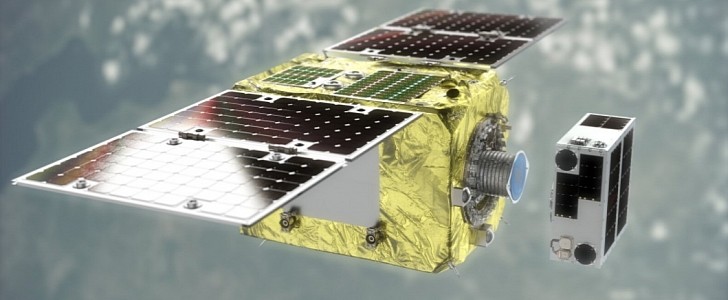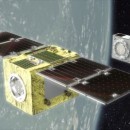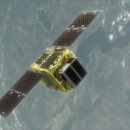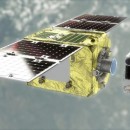Astroscale's ELSA-d orbital debris removal satellite has tested for the first time its ability to capture a spacecraft in space. In a demo performed on Wednesday, August 25th, ELSA-d successfully used the company's magnetic capture system.
Back in March, the End-of-Life Services by Astroscale-demonstration or ELSA-d was launched together with a spacecraft on a Soyuz rocket from Kazakhstan to demonstrate the company's orbital debris removal tech. ELSA-d played the role of a "servicer" designed to safely remove space junk from orbit, while the spacecraft was the "client," which simulated the piece of orbital debris.
Now, six months later, the servicer finally captured the client. Because docking with or capturing a client object is a key issue for space debris removal and on-orbit servicing in general, this test demo successfully proved ELSA-d's capability to dock with a client, such as an inactive satellite.
By using a mechanical locking mechanism that was placed on the satellite (which will allow for a more efficient capture in orbit by a 'chaser' spacecraft at the end of its life), the servicer was able to capture and release the client. Astroscale's ground teams checked out and calibrated the rendezvous sensors and validated key ground system infrastructure and operational procedures during the release and capture phase.
The company says that the completion of this step clears the way for the rest of its groundbreaking space debris removal experiments. Astroscale is now gearing up for the next phase, which will imply a "capture without tumbling." During this test, the client will be separated by a greater distance, and docking will be achieved by combining onboard autonomous software with "enhanced ground telemetry and command processing."
Next, the servicer will attempt to capture the client, which will simulate a tumbling space object as it moves through space at least 17,000 mph (27,359 kph). In the final capture demo, "diagnosis and client search," the servicer will inspect the client, retreat to mimic a far-range search, then get closer to capture the client.
Now, six months later, the servicer finally captured the client. Because docking with or capturing a client object is a key issue for space debris removal and on-orbit servicing in general, this test demo successfully proved ELSA-d's capability to dock with a client, such as an inactive satellite.
By using a mechanical locking mechanism that was placed on the satellite (which will allow for a more efficient capture in orbit by a 'chaser' spacecraft at the end of its life), the servicer was able to capture and release the client. Astroscale's ground teams checked out and calibrated the rendezvous sensors and validated key ground system infrastructure and operational procedures during the release and capture phase.
The company says that the completion of this step clears the way for the rest of its groundbreaking space debris removal experiments. Astroscale is now gearing up for the next phase, which will imply a "capture without tumbling." During this test, the client will be separated by a greater distance, and docking will be achieved by combining onboard autonomous software with "enhanced ground telemetry and command processing."
Next, the servicer will attempt to capture the client, which will simulate a tumbling space object as it moves through space at least 17,000 mph (27,359 kph). In the final capture demo, "diagnosis and client search," the servicer will inspect the client, retreat to mimic a far-range search, then get closer to capture the client.






